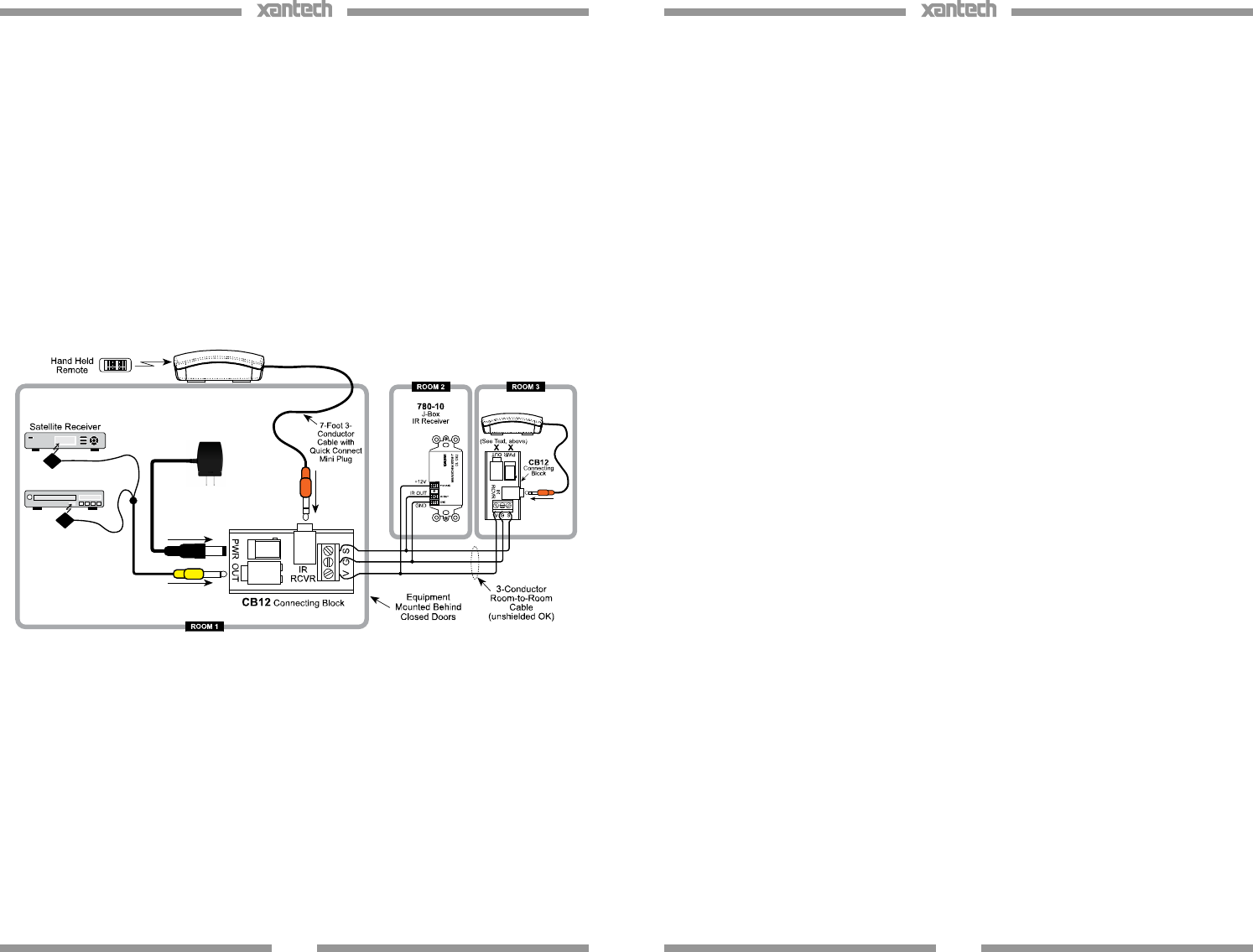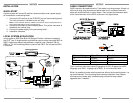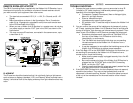
4
REMOTE ROOM APPLICATION
The CB12 Connecting Block, supplied with the Hidden Link IR Receiver, has a
three terminal input strip for connection of external infrared receivers should
you wish to control your equipment from other rooms.
• The terminals are marked V G S. (V = +12V, G = Ground, and S = IR
Signal).
• Make connections as shown in the figure below. Run a 3-conductor
cable (24 to 18 gauge wire, stranded or solid) from each remote room
to the VGS terminals of the CB12.
• When you use a Hidden Link IR Receiver in a remote room, do not plug
in a power supply or use the “OUT” jack in the CB12, as shown in the
figure below.
• You may use more IR receivers, connected in the same manner, up to
a maximum of 12.
PLACEMENT
The IR receiver should be located so that it is not directly facing a light source
such as lamps or displays (standard, LCD, and Plasma). When mounted near a
display, it should be flush to the display and away from light reflections that may
occur.
781ERGPS
To 120 VAC
(Unswitched)
Emitter
HL95 IR Receiver
HL95 IR Receiver
DVD
5
TROUBLE SHOOTING:
1. Perhaps the most common problem you may encounter is stray IR
(infrared) or RF (radio frequency) interference preventing proper
operation of the controlled equipment.
• Fluorescent, Compact Fluorescent, Neon or Halogen lights,
Neon Art, and light dimmers.
• Direct or reflected sunlight.
• Infrared security sensors (active types).
• RF radiation from TV sets that may be close to the Hidden Link
IR Receiver.
2. You can confirm the source of the interference by temporarily turning
off TV sets, isolating the Hidden Link IR Receiver from all sunlight and
turning off all lights, light dimmers and Infrared security systems. Then
check to see if the Hidden Link IR Receiver operates the component.
• Sometimes interference will cause the red Talk-Back LED on
the front of the Hidden Link IR Receiver to blink dimly,
intermittently, or continuously.
• The Talk-Back Led should only blink when you are sending
infrared commands to the Hidden Link IR receiver from a
remote control.
• It may be necessary to move either the interfering source of the
Hidden Link IR Receiver to achieve proper operation.
3. If the Talk-Back LED or the 283D/286D Emitters do not blink when you
are sending IR commands to the Hidden Link IR Receiver from a
remote control, check the following:
• Make sure the power supply is plugged securely into a live AC
electrical outlet.
• Be sure the stereo mini plug of the Hidden Link IR Receiver is
plugged into the “IR RCVR” jack on the CB12 Connecting
Block, not into the “OUT” jack.
• Check to see that all the mini plugs are properly seated into the
mini jacks on the CB12 Connecting Block.
4. If the 283D/286D Emitters blink, but the component does not respond,
reposition the emitters. They may not be located directly over the
component’s infrared receiving “window”. Consult the owner’s manual
of the unit or the manufacturer for the exact location of the infrared
“window”.






